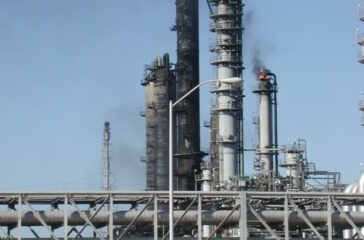Beyond East Palestine, report finds widespread toxic vinyl chloride pollution
By Dana Drugmand
When the Norfolk Southern train transporting hazardous material derailed in East Palestine, Ohio on February 3, the subsequent release and explosion of chemicals fouled the air and exposed the community to a toxic cocktail of contaminants, including a substance known to cause cancer called vinyl chloride.
 EWG
EWG